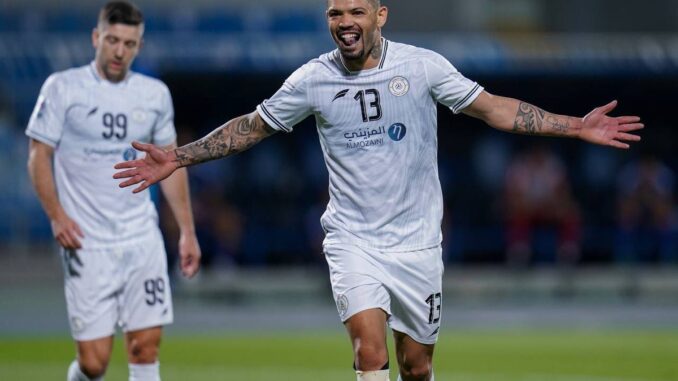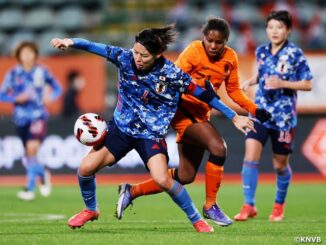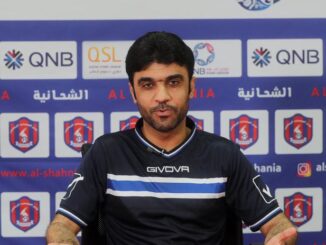
The exhausting, sometimes exhilarating, occasionally drawn out AFC Champions League group stage in the West concluded last Wednesday evening with a mix of emotions.
Following 60 games in the space of 20 short days, the region has been whittled down from the 20 that started to the final eight for the knockout stages due to commence, somewhat ludicrously in February 2023 – a whole 10 months away.
This phase felt different than those that had preceded it. We do remain distinctly in COVID-mode, in the fact the groups were still run-in neutral hubs, but there were fans in attendance at the very least, if not to the size we’d expect if there was a complete return to normality.
While the previous two editions were granted a grace period from criticism given the widespread impact of the worldwide pandemic, with the global game returning to business as normal – especially in Europe – there was always going to be a snide comment or two relating to the Asia’s pedestrian approach in transitioning back to the status quo.
This neatly coincided with the AFC’s plans to investigate a “Super League” refinement of the current Champions League format, a mere two years after they set off on their newly expanded 40-team tournament journey.
Unfortunately, the current format has started to feel like Asian football’s “new normal” as opposed to the temporary solution we all hope it will turn out to be. With pressure from member associations and fans mounting, it felt like it needed to deliver on its promises, this year more than ever.
In its defence, the draining schedule, which sandwiched six games into 19 days for each team; twice as many as was needed given the lack of home/away nuance, was unlikely to ever retain the high levels of competitiveness and interest that some required. However if we’re honest, whenever did we really look forward to a Champions League group stage, whatever confederation you were in.
The aforementioned attendance issues only increased the perceived lack of intensity and drama. The nominal home teams, involving teams hailing from the Saudi Pro League benefitted from having support in great numbers, while neighbouring nations only sent a handful of spectators, further propelling this myth of a non-event.
It’s debatable whether small clusters of fans dotted around cavernous modern stadia add anything more to an event than simply holding a behind closed doors competition as we saw in 2021.
The ACL West’s saving grace then, as has been the case over the first two seasons of expansion, was the quality of football and competitiveness across the region.
While there were clear winners and losers, attacking football was a common approach, with no one country or team wielding full dominance over their opponents in every given match.
Great exposure to fringe markets again underlined the importance of exposure.
Nasaf Qarshi, AFC Cup finalists last year qualified for the Champions League knockouts for the first time, while Jordan’s Al-Wehdat and Iraq’s Al-Quda Al-Jawiya were within a shout of progression right up until the last game.
Newcomers Mumbai City finished their debut campaign in second place, ahead of ACL regulars Al-Jazira, while Turkmen side Ahal clinched their country’s first win at the tournament proper, thrashing Qatari club Al-Gharafa 4-2 on the final matchday.
There were key moments of excitement the region could justly hang their hat on; Edmilson Junior’s hattrick against Pakhtakor, Al-Shabab’s last minute equaliser to claw back a point against Al-Quwa Al-Jawiya, the moment when Ahal scored their first ever goal against a former ACL finalist, plus the memorable 8-2 victory for Shabab Al-Ahli over Al-Gharafa, Al-Wehdat’s famous win over Al Sadd and Pakhtakor’s emphatic 5-4 victory against Al-Taawoun to deny them a place in the knockouts.
There were individual tales of brilliance showcasing the true talent that Asia has to offer – Salman Al-Faraj once again underlining his case for being the best player currently in Asia, Omar Abdulrahman’s turning back of the clock, the flying wing-back play of Dhurghem Ismail and Fawaz Al-Sagour, and the game winning finishes from Martin Boyle and Almoez Ali.
And it wasn’t just the established stars that shone; the emerging talents of full back Alibek Davronov, centre back Muteb Almufarrij, young shot stoppers Phurba Lachenpa and Resul Charyyev, and attacking young guns Abdullah Al-Hamdan and Khozhimat Erkinov all left a personal imprint on the tournament.
And that doesn’t discount the considerable world class talent on show; Ever Banega, Yacine Brahimi, Edmilson Jr, Ayanda Patosi, and Hicham Faik all deserve honourable mentions for their ability to dictate top quality performances that wouldn’t have been out of place in Europe.
The past 20 days demonstrated the potential of Asian football, if not maximised by its accepted limitations.
Any further discussions surrounding Champions League reform need to remember that the product isn’t faulty, it’s the marketing strategy and logistical circumstances that have held the format back over the last three years.
Back to the football, the true winners and subsequent favourites for the title Al-Hilal coasted through most of the month, alternating their expansive squad fluidly, while maintaining a high level of intensity.
Matching them will be a difficult feat in the knockout stages, one that may lay at the door of Al-Shabab, who despite lacking the depth in options of their bigger brother from Riyadh, have key game changers in Banega, Al-Sagour, and the firepower of Carlos Junior who will undoubtedly have an impact in the latter stages.
A side that’ll similarly keep pace with them in terms of goalscoring will be Al-Duhail whose frontline of Edmilson Jr, Almoez Ali and Michael Olunga continue to terrify defences, both in behind and in swift build up play.
There will, however, be questions that will continue to be asked about an often suspect and flat footed back line; the Qatari side conceded nine goals in four games, significantly the highest tally of any side that progressed.
Even more questions will be posed of their Qatari counterparts Al Sadd, who were eliminated from the ACL group stages for a second successive season, this time with a game to spare.
The personnel remained intact from the squad that hadn’t lost a game in the Qatar Stars League over that time period, but their mentality had seemingly dropped off a cliff.
Concerns over attitude, especially with their star men, many of whom are lynchpins to Qatar’s upcoming World Cup squad will likely persist, with Spanish coach Javi Gracia ultimately taking the lion’s share of the burden in his unsurprising exit.
UAE, like it’s neighbours Qatar, also struggled for consistency, despite initial expectations two years ago that expansion could potentially drive a wedge between the established order and the newcomers.
Champions League regulars Al-Jazira and Sharjah crumbled in the group stages, struggling to find any consistent and impactful attacking output, while Shabab Al-Ahli’s slow start was made up for by capitulation elsewhere over any unified or self styled campaign.
Elsewhere, there were modest hopes that Central Asia would make an impact on the competition, following their increase to four teams this year.
Last year’s Champions League darlings Istiklol, freshly asset stripped over the winter, predictably struggled, only picking up their solitary three points on the final day.
While Uzbek champions Pakhtakor lurched too often from the good to the bad to ever make a decent fist of challenging, with particular questions likely to focus on the depth of the squad moving forward; given their struggles since losing Dragon Ceran to injury early on, but for their final day resurgence once youth was trusted.
There were positives though, with Turkmen debutants Ahal illustrating the quality and consistency necessary to build the nation’s football moving forward. A demonstration also of the growing maturity in play of the next generation of Central Asian talent.
Speaking of which Nasaf Qarshi, a year on from their AFC Cup heroics, proved they could bridge the gap between the two tiers of continental club football by qualifying for the knockouts for the first time. Their unity around a young nucleus of a squad created a solid yet focused setup that will be difficult to break down in the Round of 16.
So plenty to look forward to then? Well, it wouldn’t be the AFC without another mitigation. We’ll have to wait another ten months for the next round to resume, as the confederation tackles the intense heat of the West, a change to the continental club calendar and a World Cup on their doorstep to boot.
Nothing like losing momentum in full flight.
Photo: Al Shabab




